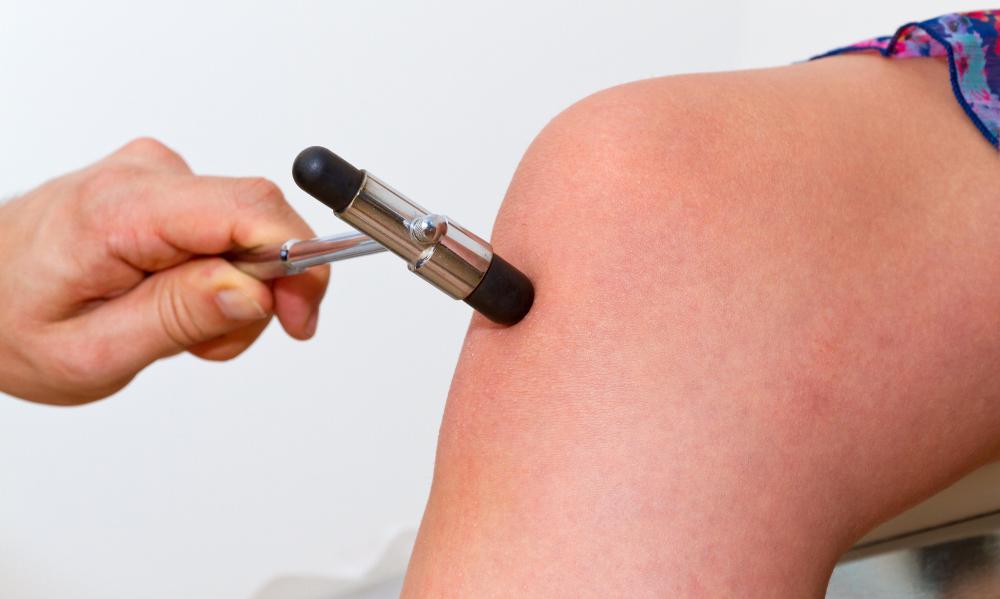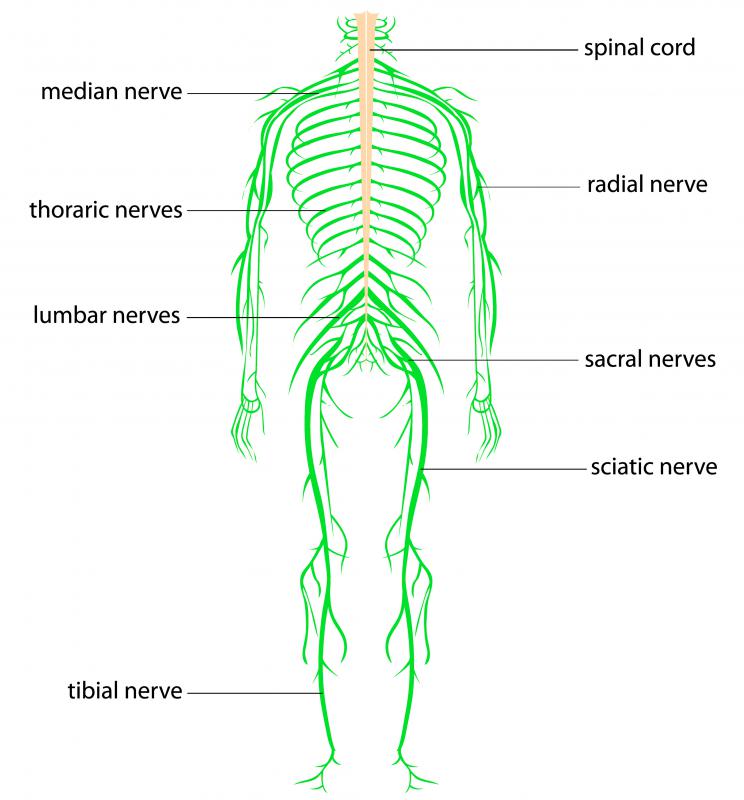At TheHealthBoard, we're committed to delivering accurate, trustworthy information. Our expert-authored content is rigorously fact-checked and sourced from credible authorities. Discover how we uphold the highest standards in providing you with reliable knowledge.
What Is the Difference between the Peripheral and Central Nervous System?
Various systems throughout the body are responsible for different functions. The nervous system is a vast network of organs and neural pathways that together help control all actions and movements of the body. The entire nervous system can be divided into the peripheral and central nervous system. The central nervous system is made up of the brain and spinal cord, and the peripheral nervous system consists of the network of neural pathways that runs throughout the body.
Working together, the parts of the nervous system control the movements of the body, from rolling the eyes to taking a breath. Even reflexes are controlled by nerve impulses. Body movements can be categorized into voluntary and involuntary.

The peripheral and central nervous system act by way of neurons, which transmit signals to other neurons through fibers called axons. Most neurons are central neurons. Glial cells are also part of the nervous system, and they provide structure and support.
The central nervous system is comprised of the brain, spinal cord and cranial nerves, and some experts include the retina in this category as well. It is housed within the dorsal cavity, which includes the cranial cavity inside the skull and the spinal canal.

The peripheral nervous system’s job is to relay information to and from the central nervous system. Sensory neurons that carry information to the central nervous system are called afferent neurons. Motor neurons carry information from the central nervous system, and they are called efferent neurons.
There are two main parts of the peripheral nervous system: the somatic and autonomic systems. The somatic nervous system controls all the functions of the body that are voluntary, like sticking out a tongue or scratching an itch. The autonomic system controls all the functions that are involuntary, like breathing and heart rate. Digestion is also part of the autonomic system and is called the enteric system.

The autonomic system of the body is broken down further into the parasympathetic and sympathetic systems. The parasympathetic system controls all the functions of the body while it is at rest, like salivation and urination. The sympathetic system controls all the functions of the body while it is under the effects of stress. It includes such “fight or flight” responses as shutting down digestion.
AS FEATURED ON:
AS FEATURED ON:

















Discussion Comments
Diabetes can cause problems with the peripheral nervous system. My aunt has peripheral neuropathy, which means that the nerves in her extremities have been damaged, but her central nervous system is fine.
She had tingling and numbness in her legs, feet, hands, and arms. Sometimes, she could feel pain in them, but they hardly ever felt normal.
It sounds strange, but her doctor actually prescribed an antidepressant to treat her peripheral neuropathy. Somehow, it is able to fix the problem.
@cloudel – The two systems need each other. The central nervous system couldn't deliver signals without the peripheral nerves to relay them, yet the peripheral would have nothing to relay without the central.
It sounds like it isn't really a question of the central nervous system vs. the peripheral nervous system. The difference seems to be in their location.
They work together to make the body work as it should. The peripheral is just an extension of the central.
I had no idea that digestion would cease if a person is full of adrenaline and in a precarious situation! I wonder what happens if a person remains in this state for an extended period of time and they have food in their system.
Post your comments